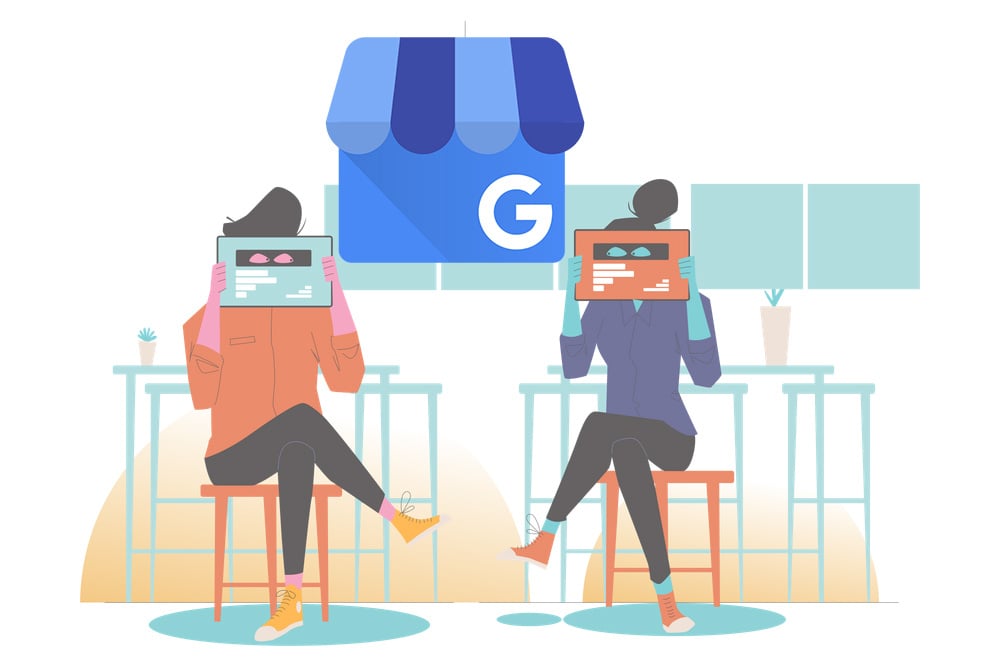How Covid-19 Taught Small Businesses to Become Resilient
Want to know how your business can keep up with the pandemic and ever-changing trends? Check out these strategies on how you can future-proof your business in times of uncertainty.

Small businesses were hit hard by the pandemic.
As of April 2021, 34% of small businesses in the US had closed, and many faced ongoing struggles with hiring, supply chains, and finding the right support to overcome problems no one had seen before.
Now, as the US enters a new phase of economic uncertainty, small business owners who are starting over or rebuilding are looking at new challenges while still feeling an eerie sense of deja vu.
It’s important for business owners to recognize that they can learn from the past to secure the future. By exploring how some small, local businesses stayed successful, even when the entire country was shut down, you have the potential to remain resilient and future-proof your business against whatever challenges come your way.
Jump to:
-
Why Small Businesses are Essential
-
How Some Small Local Businesses Weathered the Pandemic
-
What Small Business Owners Need to Know About How Covid-19 Shaped Tech
-
8 Steps to Future Proof Your Small Business
-
What Will You Do to Future Proof Your Small Business?
Why Small Businesses are Essential
Before going into how small businesses can stay afloat, it’s helpful to understand their role in the economy. While big corporations often dominate headlines, the “little guys” are more important than most people think.
 Source: SBA
Source: SBA
In October 2020, the Small Business Association released answers to frequently asked questions. Two of the most notable were that there were 31.7 million small businesses compared to 20,139 large businesses, and that small businesses employ 47.1% of private sector employees.
Perhaps even more important is that small businesses account for 65.1% of net new job creation since 2000.
That means that small businesses are crucial to the economy.
Full stop.
How Some Small Local Businesses Weathered the Pandemic
The pandemic left many small companies reeling. Thriving businesses were suddenly threatened as the world shut down. Some adapted easily. But others needed creativity and perseverance and had to adopt completely new business strategies.
In the end, it was sink or swim. Those that survived—or even thrived—had two things in common:
- They found ways to stay engaged with their consumers, and provided their goods or services in Covid-protocol friendly ways.
- They leaned into technology and invested in tools that helped them adapt.
Here are more details about what some small businesses did to thrive during Covid-19:
Remained Flexible and Adapted
During the pandemic, small business owners who showed flexibility focused on finding new ideas and implementing them quickly rather than fixating on the challenges.
Look at CrossFit or yoga studios. Some moved classes online, or outdoors, and reached out to customers to let them know they were still offering workouts and a community to exercise with—albeit virtually. These strategies kept business going and even attracted new customers. Adapting and optimizing workouts for virtual classes also helped these small businesses find success.
The way small businesses succeeded was that they were willing to shift their approach. Even more, they got innovative and looked at hardship as an opportunity to make key changes. For some, those changes remain and add a new feature that helps them grow.
Adapted to Consumer Demands
Covid-19 changed what customers wanted. Whether it was new products or services, or ecommerce and the ability to interact with companies online—small business owners were more likely to succeed if they identified and met trending consumer demands.
One great example of this was small distilling businesses—as in gin, whiskey, and vodka—who started producing hand sanitizer. Not only did they adapt quickly, but they also increased business by adding new customers by offering a product that was in high demand. It also helped critical first responders and frontline healthcare workers get the supplies they desperately needed.
Another company who found new success was Vida. Originally, Vida was a platform for people to “connect and produce art-inspired, original products.” Now they make popular, recyclable N94 and N95 masks that form an ongoing part of their business. They saw a demand, and they filled it.
 Source: Shop VIDA
Source: Shop VIDA
Many restaurants were fast to implement new software to help them adapt. Because many establishments couldn’t offer in-person dining, they created more of a ghost kitchen and invested in technology that let customers order online. Restaurants began to offer contactless pickup, and when able, provided a delivery option as well, even if it meant using a third-party service.

Found Creative Ways to Provide Goods and Services
The pandemic highlighted what happens when supply chains break down. But as a small business, you still have to find ways to provide consumers with goods and services. Covid inspired companies to get creative and resourceful.
During Covid-19, some bakery national food suppliers couldn’t fill orders. They called local farms to see if they had any ingredients they could provide. A flower shop that wanted to thrive started growing their own flowers and diversifying their suppliers.
Covid-19 brought out ingenuity, from a toy store that offered Facetime shopping sessions to a paint-your-own pottery place that put together painting packages and shipped them to customers’ homes.
Small businesses succeeded when they found new ways to get products and services to their customers, even during a lockdown.
Expanded Their Marketing Efforts to Reach Customers
Smart small businesses expanded their marketing channels during the pandemic to maintain or generate awareness. They used new marketing channels (social media platforms they weren’t on, email, texts, etc.) to reach a bigger audience.
Companies began to use an expanded approach in many different ways throughout Covid-19 as a necessity. It was sending a communication via text after an order pickup, or offering an app that easily lets customers order on their phone or other mobile devices. They provided notifications during the buying or scheduling process and communicated with customers in multiple ways.


Source: GoSite Messenger
People spend time in numerous marketing channels, which makes it helpful to create strategies for more than one marketing area. Look at social channels. Facebook was once a place you found younger generations, but now they’ve migrated to Tiktok and Instagram. If you want to market to that audience, you’ll have to meet them there.
However, that doesn’t mean you pull out of Facebook—according to Statista, there were roughly 2.96 billion monthly active users on Facebook as of the third quarter of 2022. What businesses learned was that they needed to diversify their channels, and produce branded content for each.
Another way to look at multiple channels is digital vs in-person or mobile device vs computer. Think of channels as places where customers have interactions with a business.
 Source: V12 Data
Source: V12 Data
Communicated Authentically and Transparently with Customers
People appreciate honesty. They want to know what’s going on and why. Small businesses that prioritized being authentic and transparent during the pandemic did better. In some cases, small businesses used information to move customers toward products and services that were still available or to sign up for emails, SMS, notifications, or download apps.
You may not have been able to go to your local market to buy toilet paper, but they let you know you could order it online and pick it up curbside—and if it were out-of-stock, they’d let you know when it was back.
Accepted Small Business Support
Small businesses are important for the economy. That’s why programs were swiftly developed during the pandemic to support them. Business owners that were on the lookout for ways to survive the pandemic and jumped on opportunities were far more likely to make it through.
What Small Business Owners Need to Know About How Covid-19 Shaped Tech
Technology has reshaped the way consumers want to do business. And tech innovations have improved convenience, accessibility, and information so that customers can make quick decisions.
Small business owners that didn’t utilize technology during the pandemic fell behind. Because devices were one of the only ways consumers could communicate with companies, adopting new technology was a necessity. Consumers looked to a business’s digital availability to meet their needs during Covid-19.
 Source: GoSite and U.S. Chamber of Commerce
Source: GoSite and U.S. Chamber of Commerce
8 Steps to Future Proof Your Small Business
Step 1: Stay Flexible
Stay informed about what’s trending in your industry and be ready to be open-minded to change. Use others to help you brainstorm, and remember always to define what makes your business unique, even as you grow and change.

Source: International Labor Organization
Step 2: Use Technology
Small business owners wear many hats, and technology can make a difference in supporting you and giving back your time. Research how others in your industry use tech, and prioritize what to invest in. The best software and platforms are often multipurpose. They centralize important information and help you keep the big picture in one place.
Some of the big tech time savers for small businesses are:
- Automations (automatically performs a task)
- Integrations (connects your favorite platforms together and lets them share information)
- Platforms that give you customer management tools and analytics.
It’s beneficial to invest in your website and choose a payment processing system that supports your needs while giving your customers a good experience as well.
Step 3: Use Your Data
Data can feel overwhelming, but even novices can quickly learn how to use it. Data is what drives many business decisions in today’s world, so giving yourself a brief 101 class on data is worthwhile. Some of your best data will come from sales, supply chain, website traffic, marketing campaigns, and customer contact information.

Source: GoSite Placement Dashboard
Step 4: Know What Your Customers Want and Identify New Niches
Your customers are the heart of your business. Identifying their needs should be at the top of your list, along with letting them know how you uniquely meet those needs. Remember to listen to your customers anytime they communicate. The more you can carve out a niche, the better your chance of attracting valuable leads within your targeted audience.
Step 5: Create a Multiple Marketing Channel Approach
Expand the marketing channels you use to gain a bigger audience. However, keep in mind that it should always reflect who you are as a business. Your content should add value and provide solutions to your customer’s problems. And give things time to work. Strategies don’t always start working overnight.
Step 6: Look for Ways You Can Maximize Budget and Other Resources
Any action you can take to reduce your budget, make it more effective, or gain more time will give you the space to focus on building or expanding your business. There are endless materials online that can guide you in becoming more productive and efficient. Use them. And don’t be afraid to divide tasks in a way that frees you up to spend your time on more important projects or goals.
Step 7: Lean Into Support
Use your local small business network to stay aware of grants, funding opportunities, free classes, and other types of support that help you grow your business. Also, don’t be afraid to invest some budget in having a professional handle tasks that feel overwhelming.
Step 8: Build an Emergency Fund
In profitable periods, put some money aside for a rainy day (or period of challenge). This is especially critical to do when times are good.
What Will You Do to Future Proof Your Small Business?
You don’t have to tackle every change or strategy all at once. Each action you take to future-proof your business takes you a step in the right direction.
The important thing to remember is that no matter how difficult the world gets, people need goods and services. Additionally, they need each other, and small businesses like yours can be the very thing customers need in a time of crisis.
%20(1)%20(1).png?width=340&name=Group%2012%20(2)%20(1)%20(1).png)




